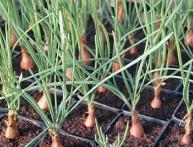How to grow eggplants

Eggplant is one of the favorite vegetables for many of our compatriots. It can become the basis of a culinary masterpiece in the hands of a skilled housewife and delight the family with its piquant and unique taste. In addition, this vegetable has a number of healing properties, so its partial presence in the diet will only be beneficial. But we usually buy eggplants in stores or markets for the reason that the plant is quite demanding in terms of climatic conditions and care.
Since this representative of the nightshade family comes from the tropics, it loves the sun and high temperatures. Already at +14 °C the plant stops developing, and at +6 °C the harvest is completely lost. In addition, the soil and air must be sufficiently moist. Neutral, loose, organic-rich soil is best suited for eggplant. Therefore, non-acidic peat and sawdust (sand) are often mixed for it.
It is best to sow seeds for seedlings 2 months before planting in permanent soil. The sowing technology is the same as for tomatoes or peppers. It’s unlikely that you will be able to achieve a harvest in open conditions. Most often, eggplants are grown under film or in glass greenhouses. From time to time they need to be fed with nitrogen, phosphorus, and potassium. It is better to do this regularly, for example, once a week.
For normal flowering and fruit formation, the temperature must be fairly stable. Sudden changes are fraught with falling off of inflorescences and underdeveloped fruits. The most optimal range is 25-28 °C.
In the middle zone, it is better to buy specially adapted varieties.Discard late-ripening ones, as they may not have time to produce a harvest, and those that are too tall (they are more difficult to care for).








